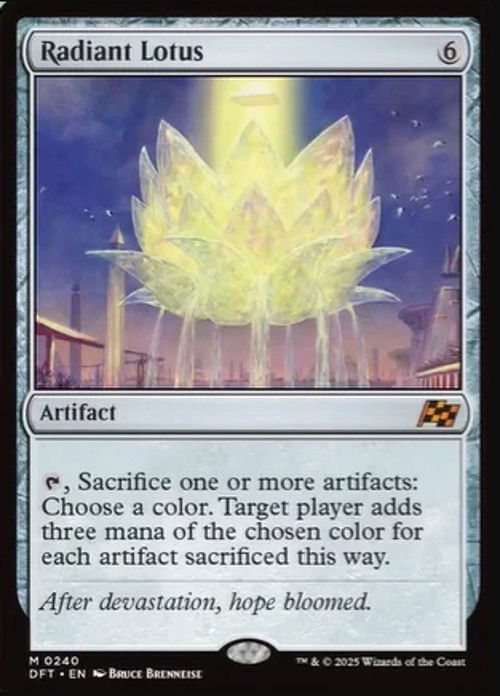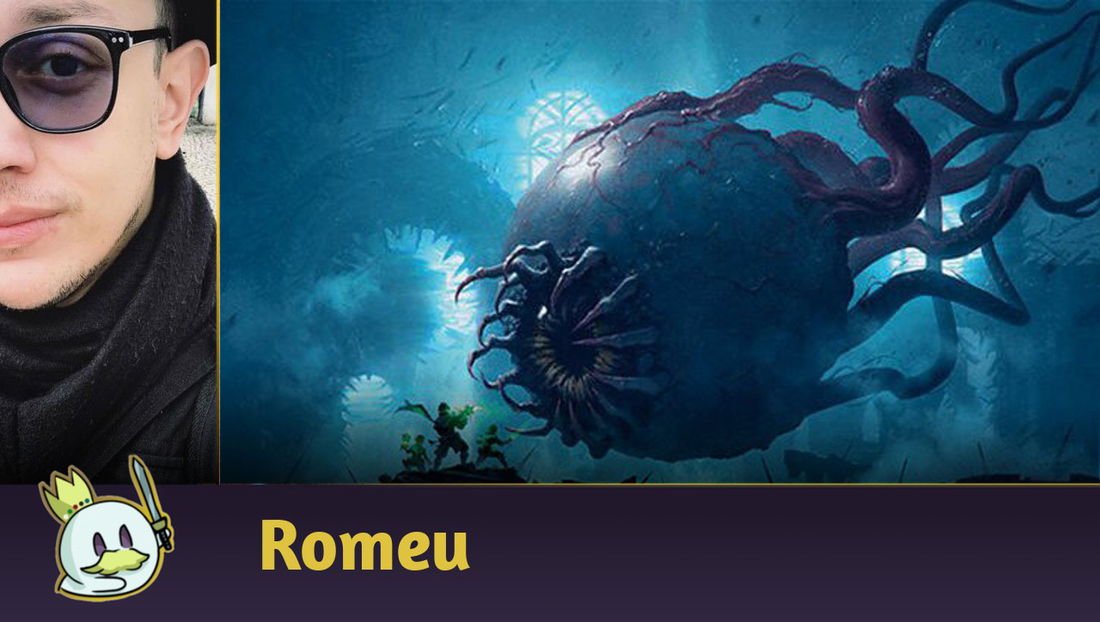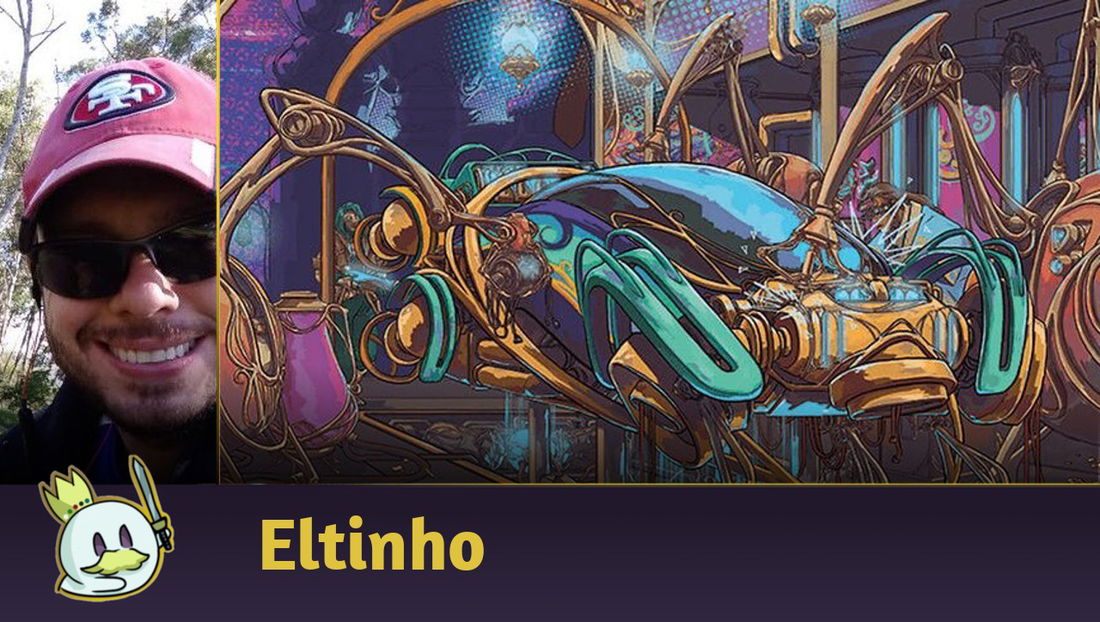If you've been playing Magic for a few years, you've probably heard of the acronym KCI. The three letters are short for Krark-Clan Ironworks, an artifact from the Mirrodin block banned from Modern since 2019, and whose reason for the ban is one of the most controversial to date: KCI became known as the protagonist of one of the most boring decks in Modern history - Eggs.
In 2024, the format revived the terrors that Eggs caused with the combos of Nadu, Winged Wisdom: despite being different, the consequences of both plays were the same for logistical purposes - that of a non-deterministic combo performing repetitive actions while your opponent watches in the hope that its controller wins quickly enough to advance to the next match.
Ad
Now, KCI is back. Well, it didn't really come back, but Aetherdrift brought a mechanically similar card, capable of bringing the same interactions to Pioneer that it had in Modern.

Radiant Lotus costs two more mana, needs to tap to activate its ability, but generates three mana instead of two - and of any color. In theory, its extra steps make up for its higher cost and what should be its biggest limitation in some formats: its ability is not a mana ability, but an activated ability, so it goes on the stack and can be responded to with effects like Stifle, Tishana’s Tidebinder and the like.
This card brings the possibility of a new combo directly to Pioneer, which has the tools to enable it, and also to Modern, where it has much greater challenges than its predecessor in the current Metagame.
How does the Eggs combo work?
Eggs originally came about from the interaction of Myr Retriever with artifacts that can be sacrificed to generate mana and draw more cards. Ideally, a deck will use multiple copies of these artifacts to filter colors and dig for a looping spell - these usually involve returning artifacts from the graveyard to the battlefield and repeating the process until you find your win condition.

In the case of KCI, the combo involved using Krark-Clan Ironworks to sacrifice artifacts like Chromatic Star and triggering Scrap Trawler to bring back Lotus Bloom, sacrificing Bloom for mana, playing another artifact, drawing a card, sacrificing, returning Lotus Bloom, generating mana, and repeating until you reached the point where you could loop Pyrite Spellbomb for lethal damage.
Building an Eggs deck is not easy, especially in Pioneer or Standard (which I won't cover in this article, as there are few enablers for this card in the format), but we can divide its needs into four categories:




The general rule for this combo to work is that all steps need to generate positive mana at the end of the process because it is with this mana that you continue the loop and can make an omelette - your win condition.

Open the Vaults is a good example of how positive mana matters in Eggs, especially with Radiant Lotus: if I sacrifice two artifacts with the Lotus and cast Open the Vaults, I generated six mana in the process to pay 
Ad
Radiant Lotus in Pioneer

The first point that makes Radiant Lotus viable in Pioneer is the fact that there is a very solid shell for it. Between Emry, Lurker of the Loch, Scrap Trawler and Whir of Invention, in addition to the most varied two or even three mana artifacts that offer some beneficial effect like drawing cards, there is no doubt that the necessary pieces for an Eggs in Pioneer are in the format - except for one of them that requires a little more work.

The best ways to bring the Lotus back, besides Emry, from the graveyard, are these two cards. There are other options like Brought Back that might be worth it, but since it returns permanents to the battlefield tapped, we can't reuse the artifact's ability without another piece like Paradox Engine, Manifold Key or Corridor Monitor.
Repair and Recharge provides positive value with Radiant Lotus because it puts a Powerstone token on the board while returning the card to the battlefield. It's not a huge advantage, but it allows for another round of casting artifacts to sacrifice later.
Brilliant Restoration, on the other hand, costs more to play, but if it resolves, it virtually wins the game for its controller; it's very hard to come back from another round of Lotus combined with five or more ETBs to draw more cards.
It's worth noting that Pioneer has a few free enablers in addition to Mox Amber with two artifact lands that enter untapped.

And if one of the greatest challenges of this deck is being able to cast its key card, there are ways to accelerate that process as well:

In addition, cards like Whir of Invention greatly increase the consistency of finding Radiant Lotus while each artifact that enters counts towards the Improvise - another way to find Aetherflux Reservoir, the likely win condition.
There is a new deck for Pioneer with this card, and one that will need to be respected for some time if it finds the right home with the ideal speed to progress with its plan and prey on the Metagame's Midranges without being crushed by Aggro.
Radiant Lotus in Modern
The Modern Metagame today is a different beast than it was when Krark-Clan Ironworks was legal, and Radiant Lotus has the challenge of proving to be a more efficient combo than Grinding Station - and spoiler: it probably won't.
Of course, almost all the benefits of Grinding Breach can be leveraged in some way with the new card, with Emry's combination with Mox Amber, and Mox Opal being the main one, but the amount of technically dead cards that the new KCI has to run compared to one of the current best decks in the format is a huge drawback
Ad
The 
I'm sure someone will try to break Radiant Lotus, and it will be interesting (but not fun) if they can. But today, given the current state of Modern, I feel like the new artifact will just try to do something that another deck does better while there are other combos - like Belcher - that can fulfill a similar role in the Metagame and with more consistency and maindeck tools to protect themselves.
Perhaps, like Splinter Twin, KCI would become a relic of the past by 2025.
Conclusion
That's all for today!
If you have any questions, feel free to leave a comment!
Thanks for reading!









— 评论0
Soyez le premier à commenter